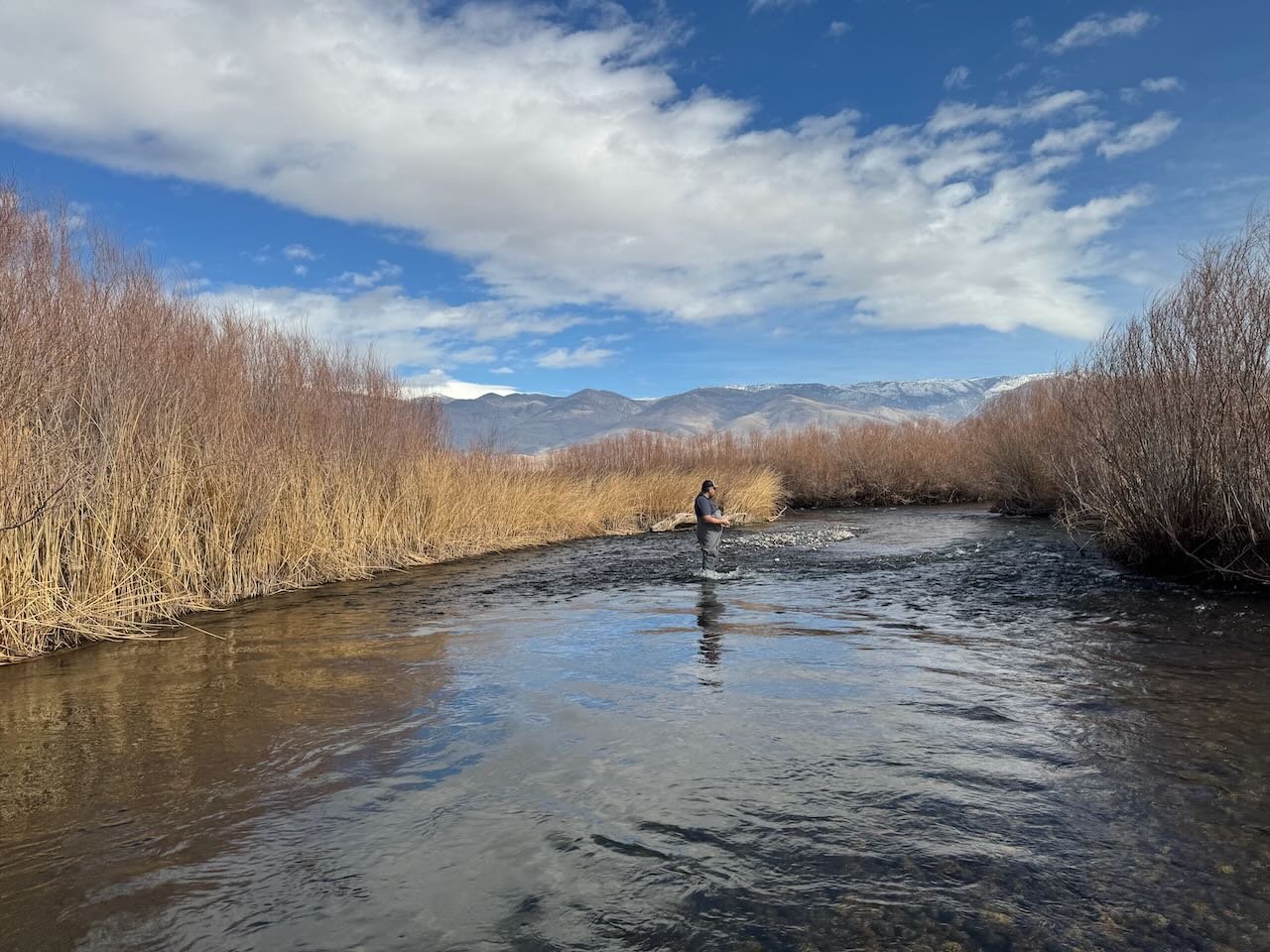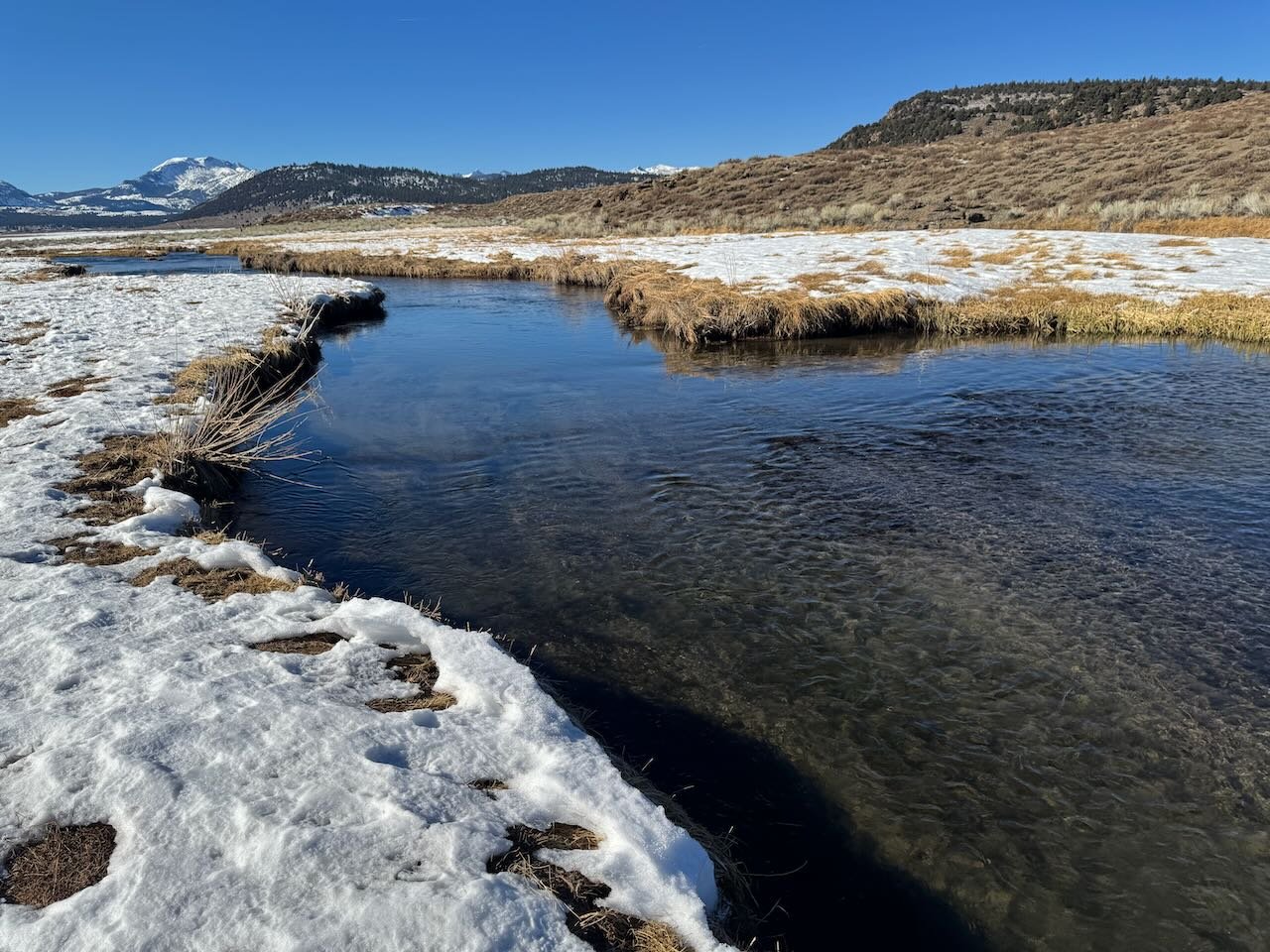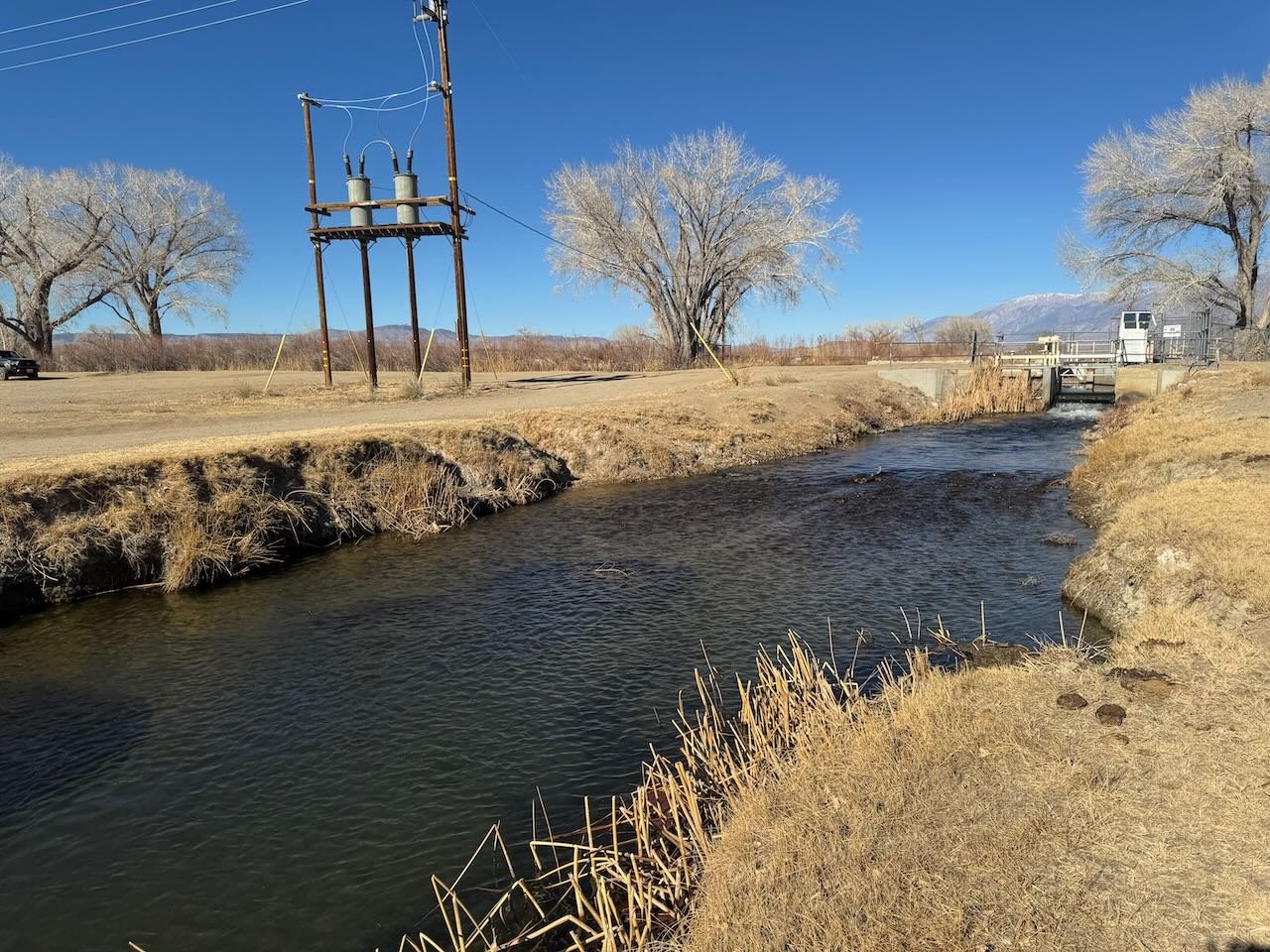A couple of storms are due through the Eastern Sierra this week and could leave some substantial snow at higher elevations. Like all storms we will not know how powerful they are until they leave the area. So until they come and go we will not know the outcome of snow on the ground and access to fly fishing waters in the Long Valley area. The Owens Valley is expected to get rain. The rain should not have a big effect on waters in the Owens Valley. Hatches of midges, mayflies, stoneflies and caddisflies are the insects that the trout are feeding on in waters of the Eastern Sierra. For those looking for dry fly activity it's sporadic at best this time of year.
Warm sunny days are being replaced by rain and snow showers in the Eastern Sierra as a series of storms moves through the area.
Lower Owens River
Wild Trout Section:
Mid-day hatches of blue wing olive mayflies have the trout feeding on the nymphs. If you are on the right spot on the right day you can use dry flies on the surface if the trout are feeding on the hatching mayflies. For the dries use size 18 blue wing olive parachutes, size 18 Adams parachutes and size 18 sparkle duns. For the nymphs use size 18 bead head flash back pheasant tail nymphs, size 18 olive quilldigons and size 18 Jedi master bateis nymphs. Skwala stoneflies are hatching and the trout are feeding on the nymphs. Use size 12 stoner nymphs on competition jig hooks, size 14 copper John’s and size 14 golden/brown Pat’s rubber legs to fool the wild rainbows and browns.
Jack Yarger from Beverly Hills landed this wild brown trout from the catch and release section of the lower Owens River that took a stoner nymphs fished on a tight line rig.
Hot Creek
Interpretive Site:
Storm predictions are not always accurate. When the storms clear the Eastern Sierra we will know if the Interpretive Site of Hot Creek is still accessible by vehicle. Prior to the storms fly fishing was good with both dries and nymphs. Mid-day midge hatches and the occasional blue wing olive mayfly had the trout feeding on the surface. For the dries fish size 20 blue wing olive parachutes, size 20 Adams parachutes, size 20 olive sparkle duns, size 20 Griffith’s gnats and size 20 olive midge dry flies. For the nymphs fish with size 20 bead head flash back pheasant tail nymphs, size 18 olive quilldigons and size 20 black SOS nymphs.
Time will tell if Hot Creek Interpretive Site will be covered with a new layer of snow as a series of storms moves through the area.
Hot Creek
Canyon Section:
This is a fun section of Hot Creek to fish when there is snow on the ground. It can be a very quiet spot except for the slurping of rising trout. Nymphing has been the best method of fly fishing the canyon section. Tight line nymphing with a standard nine foot five weight rod is a very effective method of nymphing in the canyon. Euro nymphing is also very effective in the canyon section. Use size 20 blood, tiger or zebra colored midges in larvae or pupae patterns, size 20 bead head flash back pheasant tail nymphs, size 18 olive quilldigons, size 20 olive SOS nymphs and size 18 jedi master bateis nymphs.
Before the snow storms fly fishers could drive out anywhere they wanted on the upper Owens River above Benton Crossing Bridge.
Upper Owens River
Above Benton Crossing Bridge:
Easy vehicle access maybe over after this series of winter snow storms moves through the Eastern Sierra. There are trophy rainbow trout in the river willing to take nymphs. The key is to find the trophy trout. The upper Owens has seen lots of fly fishing pressure which has slowed down the fly fishing opportunities for the trophy rainbows. Key to success is to thoroughly cover lots of deep holes, deep runs and cutbanks where the trout are resting and feeding. Fish with size 18 bead head flash back pheasant tail nymphs, size 18 olive quilldigons and size 20 midge pupae or midge nymph patterns in blood, zebra or tiger coloration for the resident rainbows and browns. For the trophy rainbow trout use size 12 stoner nymphs, size 14 copper John’s size 12 green/gold wire Prince nymphs, size 14 golden/brown Pat’s rubber legs and size 12 variations of a gold ribbed hare’s ear.
Fast sections of the canal like this riffle are place fly fishers are least likely to spook the wild trout.
Bishop Creek Canal
Behind Bishop Veterinary Hospital:
Surface runoff from this week’s rain storms may increase the flows to improve the fly fishing in Bishop Creek Canal. With the low water the wild trout are very spooky and very hard to sneak up on and get a cast to. On sunny afternoons casting your shadow on the water is definitely spooking trout. Size 18 olive quilldigons, size 18 bead head flash back pheasant tail nymphs and size 20 blood midges, zebra midge and tiger midges are fooling the wild trout if you can make a drift without spooking the trout.





